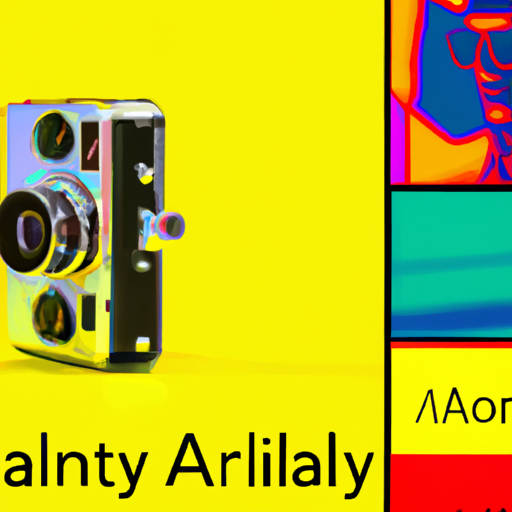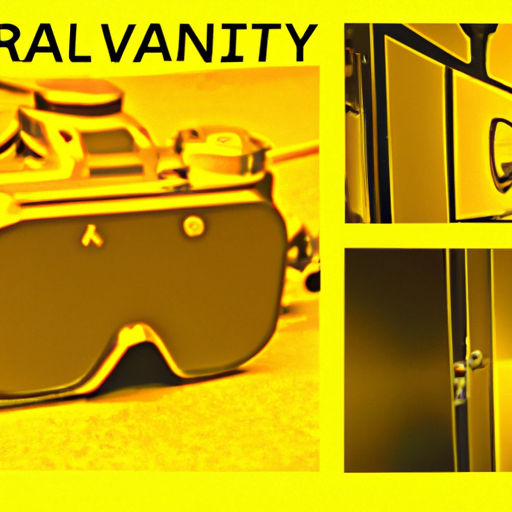
-
Table of Contents
- Designing for Virtual Reality and Augmented Reality
- The Importance of User-Centered Design
- Designing for Immersion
- Visual Design
- Interaction Design
- Considerations for VR and AR Navigation
- Teleportation
- Wayfinding and Landmarks
- Accessibility in VR and AR
- Physical Accessibility
- Visual Accessibility
- Case Studies: Successful VR and AR Designs
- Pokemon Go
- Oculus Rift
- Key Takeaways
Designing for Virtual Reality and Augmented Reality

Virtual Reality (VR) and Augmented Reality (AR) have become increasingly popular technologies in recent years, revolutionizing various industries such as gaming, entertainment, education, and even healthcare. As these immersive technologies continue to evolve, it is crucial for designers to understand the unique challenges and considerations involved in creating effective and engaging experiences for VR and AR. In this article, we will explore the key principles and best practices for designing in the virtual and augmented reality space.
The Importance of User-Centered Design
When designing for VR and AR, it is essential to prioritize user-centered design principles. These technologies have the potential to transport users to entirely new worlds or enhance their perception of the real world. However, without careful consideration of user needs and preferences, the experience can quickly become disorienting or overwhelming.
One of the fundamental aspects of user-centered design is understanding the target audience. VR and AR applications can cater to a wide range of users, from casual gamers to professionals in various industries. Conducting user research and gathering insights about the target audience’s goals, preferences, and limitations is crucial for creating a tailored experience.
Designing for Immersion
One of the primary goals of VR and AR is to create a sense of immersion, where users feel fully present in the virtual or augmented environment. Achieving immersion requires careful attention to various design elements:
Visual Design
The visual design plays a crucial role in creating a compelling VR or AR experience. High-quality graphics, realistic textures, and attention to detail can significantly enhance the sense of immersion. However, it is essential to strike a balance between visual fidelity and performance. VR and AR applications often require real-time rendering, so optimizing the visuals for smooth performance is crucial.
Additionally, designers should consider the user’s field of view (FOV) and ensure that important information or objects are within the user’s line of sight. Proper use of depth cues, such as perspective, shading, and lighting, can also enhance the perception of depth and realism in the virtual environment.
Interaction Design
Interaction design in VR and AR is vastly different from traditional 2D interfaces. Users can interact with the virtual or augmented world using various input methods, such as hand gestures, voice commands, or specialized controllers. Designers must carefully consider the affordances and limitations of each input method to create intuitive and natural interactions.
For example, in a VR game, designers can leverage hand tracking technology to allow users to physically grab and manipulate objects in the virtual world. This level of interaction can significantly enhance the sense of presence and immersion. However, it is crucial to provide clear visual and auditory feedback to guide users and prevent frustration.
Considerations for VR and AR Navigation
Navigating in VR and AR environments can be challenging, especially when users are fully immersed in a virtual world. Designers must carefully consider the navigation methods to ensure a seamless and comfortable experience:
Teleportation
Teleportation is a popular navigation method in VR, allowing users to move instantly to a different location within the virtual environment. This method helps prevent motion sickness, a common issue in VR experiences. By pointing and selecting a destination, users can avoid the discomfort associated with traditional locomotion methods.
Wayfinding and Landmarks
In AR applications, wayfinding and landmarks play a crucial role in guiding users in the real world. Designers can use visual cues, such as arrows or markers, to direct users to specific locations or objects. By leveraging the user’s physical surroundings, AR applications can provide context and enhance the overall experience.
Accessibility in VR and AR
Accessibility is an important consideration in any design process, and VR and AR are no exception. Designers should strive to create inclusive experiences that can be enjoyed by users with various abilities:
Physical Accessibility
VR and AR experiences often require users to wear headsets or use specialized controllers. Designers should consider the physical comfort and ergonomics of these devices, ensuring that they can be easily adjusted and used by individuals with different physical abilities.
Visual Accessibility
For users with visual impairments, designers should provide alternative ways to access information or interact with the virtual or augmented environment. This can include audio descriptions, haptic feedback, or voice commands. Additionally, designers should consider color contrast and font sizes to ensure readability for users with visual impairments.
Case Studies: Successful VR and AR Designs
Several companies have successfully implemented VR and AR designs that showcase the potential of these technologies:
Pokemon Go
Pokemon Go, an AR mobile game, became a global phenomenon upon its release in 2016. The game allowed players to capture virtual Pokemon creatures in the real world using their smartphones. By leveraging the GPS and camera capabilities of mobile devices, Pokemon Go created a unique and immersive gaming experience that blended the virtual and physical worlds.
Oculus Rift
Oculus Rift, a popular VR headset, revolutionized the gaming industry by providing high-quality virtual reality experiences. The headset’s precise tracking and immersive visuals allowed gamers to feel fully present in virtual worlds. Oculus Rift’s success can be attributed to its focus on user-centered design, prioritizing comfort, and providing intuitive interaction methods.
Key Takeaways
- Designing for VR and AR requires a user-centered approach, understanding the target audience’s needs and preferences.
- Creating a sense of immersion is crucial, considering visual design, interaction design, and optimizing performance.
- Navigation methods, such as teleportation and wayfinding, play a significant role in ensuring a seamless experience.
- Accessibility should be a priority, considering physical and visual impairments.
- Successful VR and AR designs, such as Pokemon Go and Oculus Rift, showcase the potential of these technologies.
As VR and AR technologies continue to advance, designers must stay up-to-date with the latest trends and best practices. By prioritizing user-centered design, creating immersive experiences, and considering accessibility, designers can unlock the full potential of VR and AR, transforming various industries and shaping the future of human-computer interaction.
